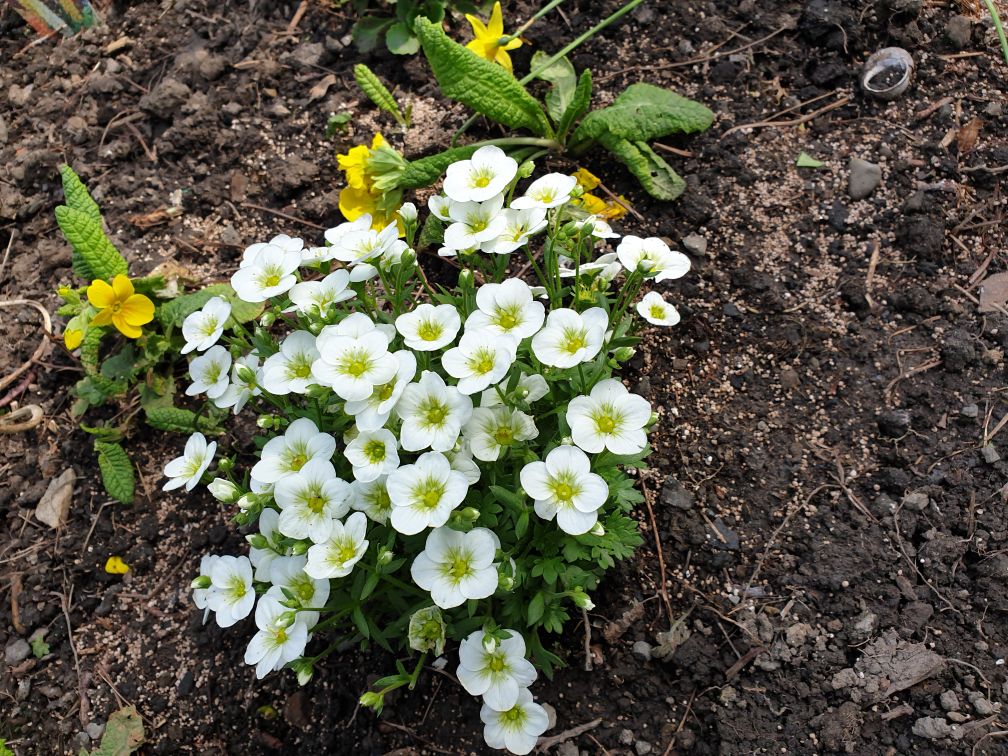Saxifrages offer many varieties and types within its family of plants. The family name or genus is Saxifraga. Another name for saxifrages are rockfoils.

There are approximately 440 different types of plant within the family which differ greatly in terms of their flowers, leaves and formation. The saxifrages are small alpine or woodland plant types, which have been cultivated around the world. There are annuals, biennials and perennials in this group.
Saxifrages are evergreen rather than deciduous plants. They do not have woody stems; the stems maintain a green color in most areas, often surrounded by multiple small flowers. They look attractive all year round. The stems do not form any leaves, but carry flowers that can be yellow, white, pink, red and purple. The flowers can be star-shaped or round. Some varieties have tiny flowers and others have larger ones, but mainly small flowers relative to other plants.
The word saxifrage means stone breaker, possibly because of a link to traditional medicinal use in breaking up kidney stones. The name is derived from Latin.
Peter Pan Saxifrages

The ‘Peter Pan’ variety, as all others, is a beautiful evergreen plant. These produce relatively large, saucer-like white flowers which add cheer and colour to the garden from spring through to the end of summer. Saxifrages are ideal as border or rock garden plants. They can also be planted under taller cottage garden plants, such as roses, as they provide wonderful ground cover and add interest to the eye at different levels of the garden.
Some people may find that certain varieties of saxifrages to be useful terrarium plants. These plants generally are clump or mat-forming. Peter Pan, for example, will grow to a height of about 4 inches (approximately 10cm) and will spread across about 12 inches (approximately 30cm).
Caring for Saxifrages
This plant loves to be in full sun or partial shade but will need a well drained soil. These plants can be bought in plant pots from garden centres, or they can be grown from seed, or existing clumps can be divided to produce new plants. When planting from a plant pot, water well and leave to drain before planting in a prepared hole which should be large enough to avoid any type of damage to the roots. This is important because root damage will reduce the plant’s ability to flourish. Dig in some moist fertiliser and compost to give the roots a good start and fill in with the soil from the prepared hole. Some gravel/grit for garden use can also be mixed into the soil in the planting area if you want to increase the drainage in that particular part of the garden. The plant should be about half an inch below the final soil level. Firm gently around the plant and water well. Remember to water the plants regularly in the first year of growth to encourage strong plants. A useful tip is to feed the plants with a general fertiliser in spring as this will encourage healthy growth. These plants are very easy to care for and require little attention apart from a light pruning after flowering.
Saxifrages can be attacked by some pests, including red spider mites, slugs and aphids, but usually these plants stay healthy and are disease-free. When growing from seeds, plant the seeds in seed boxes in spring using any good quality multi-purpose compost and keep the compost moist, but not water-logged, to encourage seed growth. Mature clumps are best divided in the springtime and will grow well in the right conditions as described above.
Like to know more?
Thank you for reading this article, we hope that you have found it useful. Take a look at the other articles about flowering evergreens on AboutPlants.com.
Can you improve us?
Interested in adding to or improving the information about plants on this website? Please contact us with your suggestions.